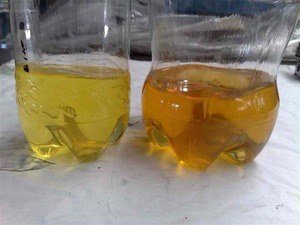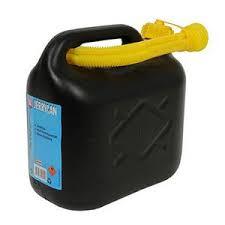Prolong Your Fuel’s Life with a Fuel Stabilizer
“Gasoline, also known as petrol, is a transparent liquid mainly used for internal combustion engines processed using fractional distillation and improved by additives. Stored in the ground for millions of years as an unrefined liquid, gasoline loses its natural potency once processed and when left unused for long periods of time.“
The Life of Gasoline Fuel
The length of life of gasoline is dependent on its type and the storage conditions in which it is kept. Generally, it can last from a couple of months to a couple of years. To be safe, however, it is better to assume that the gas from a pump has already been in storage for a certain amount of time already. Because of this, motorists are often at a loss when it comes to estimating the duration they can afford until the gasoline turns stale, picks up condensation and moisture and generally becomes unusable.
 Factors that Make Fuel Turn Stale
Factors that Make Fuel Turn Stale
Fuel can go stale for a couple of reasons. What commonly happens is that the lighter chemicals in the formulation evaporate to leave a heavier formula behind. This occurrence is very common in gasoline used in motor vehicles because these fuel types vaporize fast to create a combustible mix with the air. When fuel like this is left unused for too long, the volatile elements and compounds that make it effective evaporate, therefore making the gas less effective.
Another cause of fuel turning bad is oxidation which happens when some of the hydrocarbons in the fuel create a reaction with the oxygen to produce new compounds. You can know that your fuel has oxidized if it gives off a sour odor or if its color has turned darker. Sometimes, small, solid gum-like particles, sometimes referred to as ‘varnish’ can also be noticed as well. Using oxidized gas is a very bad idea since the presence of gum can clog the fuel filter and lead to the development of deposits in the system which can hurt your automobile’s performance and fuel mileage.
Fuel contamination is the third most common cause of fuel turning bad. In this case, the water serves as the main cause of the problem with it getting in contact with the stored gas as temperatures fluctuate. Fuel contamination can also happen through bacterial contamination which later progresses into sludge. Rust can also develop as well. Fuel with any type of crud or sludge is not recommended for use because just like with oxidized gas, it can also block important pumps and filters in the engine.
 Means to Prevent Fuel Degradation
Means to Prevent Fuel Degradation
One of the many ways to keep your fuel fresh is to invest in proper containers. Storage containers should be clean and have tight, perfect-fitting caps. Metal and plastic are good though steel can rust and fiberglass is not allowed unless it’s specifically made to hold fuels with any type of alcohol in them.
When putting the fuel in the container, try to keep it as full as possible to lessen the possibility of exposure to air and condensation. Do not fill it up to the brim, however, or the gasoline will end up not having any space to expand and contract as the temperature changes. As for storage, keep your gasoline in a cool place to prevent oxidation and evaporation.
Another good option is to make use of a fuel stabilizer especially if you are planning to keep the fuel around for a while, say during off-season storage.
Stop Gasoline Degradation with a Fuel Stabilizer
A fuel stabilizer is a type of technology that is designed to curb a fuel’s degradation cycle. This product can either come in the form of antioxidants or as a metal deactivator. Sticky resin-like deposits can develop in gasoline after a long time of storage due to oxidation. Some thermally or catalytically cracked gasoline products are particularly prone to this problem with the gum formation accelerated by copper salts. A fuel stabilizer addresses this by neutralizing them with additives termed metal deactivators. There are also fuel stabilizer products that directly deactivate metal salts which hasten the formation of residues. Here, the impurities come from the engine itself or from fuel contaminants.
A fuel stabilizer, moreover, can prevent degradation with the addition of antioxidants like amines and phenylenediamines. For hydrocarbons with a bromine number of 10 and higher, they can be protected with the application of unhindered or partially hindered phenols.
Fuel stabilizer products are usually recommended especially during winter when vehicles and engines are usually kept away during the cold months. If the fuel is left in the gas tank itself, it is better to keep the tank as full as possible to prevent rusting.
While a fuel stabilizer can help in lengthening the life of fuel, it is not capable of restoring already bad gas to its former state.
If you are searching for a good fuel stabilizer, you can check out BoostPerformance Product’s brand by clicking here.
About the Author
Tech Guy
Automotive enthusiast, passionate about Jeeps, hot-rods, turbos, performance, efficiency, diesels, fuels, high performance oils, additives and anything with an engine.

